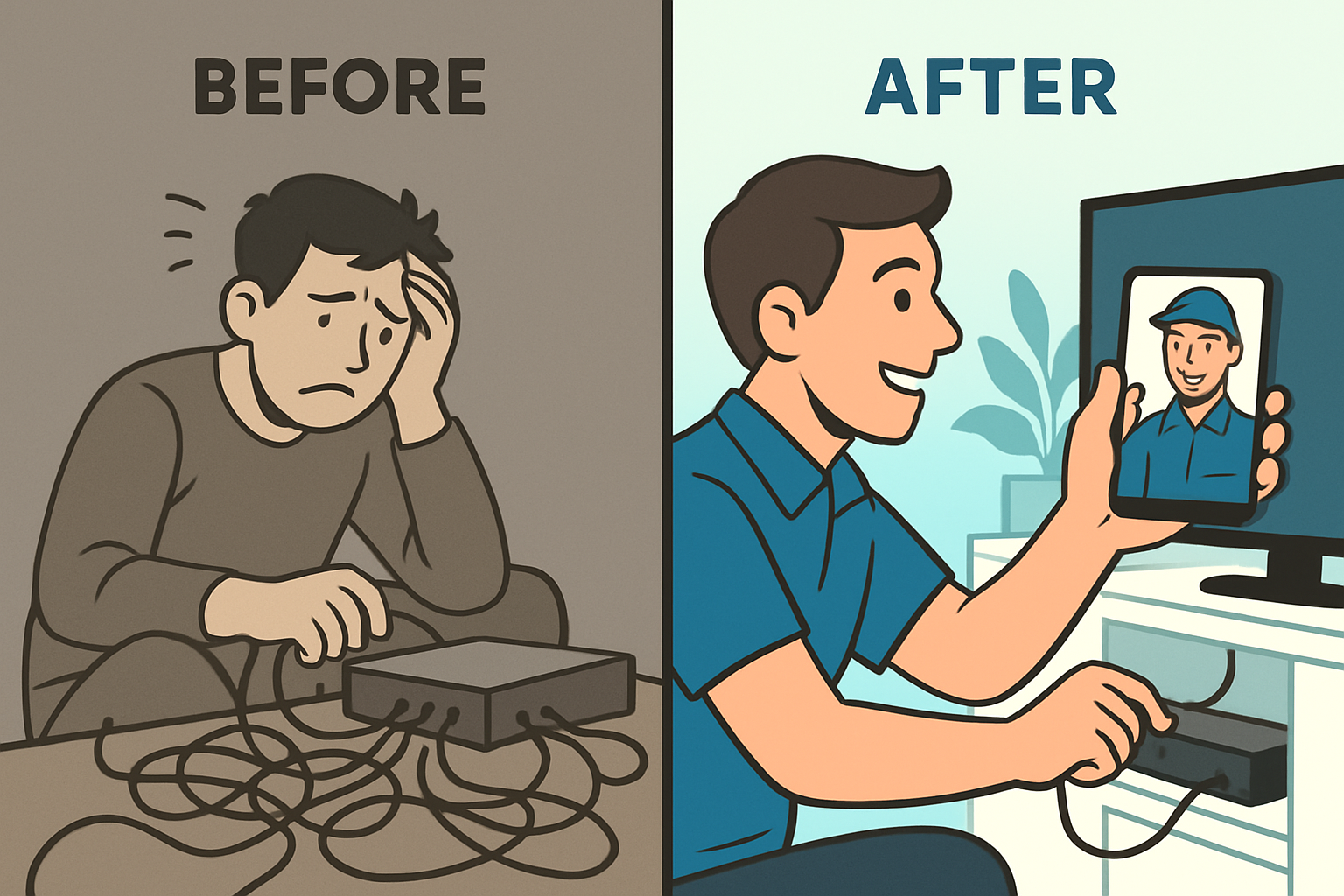10 Benefits of Remote Video Support on Technician Utilization and Efficiency
Field service teams today face mounting pressure: deploy technicians efficiently, reduce service delays, keep costs down, and deliver strong customer experiences. But traditional models—sending a tech, driving across town, waiting for parts—leave room for wasted time and missed opportunities. That’s where remote video support steps in. By enabling live visual assistance, you can transform technician workflows, boost utilization, and improve first‑time fix rates.
According to industry research, remote video tools like Blitzz's remote video support can help reduce repeat visits by around 22%. and the average cost of a single truck roll in sectors like telecom or utilities runs between $200 and $500, with estimates rising to $1,000 when you factor in full labor, travel, and opportunity costs.
Here are 10 clear benefits of remote video support—with real examples and scenarios you can relate to.
1. Slash Travel Time
A technician from a national broadband provider is dispatched to a customer’s home for a router issue. The drive takes 30 minutes. With remote video support, instead the tech joins a live video call from the office, sees the blinking lights on the modem, guides the customer to reseat cables—and resolves the issue in under 10 minutes.
Less time on the road means more time solving problems, boosting overall technician utilization. For companies tracked, remote video support has reduced on‑site visits by up to 30%.
2. Reduce Idle & Admin Time
Consider a field service tech who finishes a job, drives back, and then waits 20 minutes to file paperwork before receiving the next assignment. Idle time adds up. Live video sessions allow an expert to remotely assist multiple customers or junior techs from a central location—cutting down on downtime and increasing productive hours. As one study noted, about 50% of field service firms already use video assistance to help techs work more efficiently.
3. Fewer Repeat Visits
A national utility company finds that about 25% of their truck rolls are avoidable—caused by dispatching a technician without full parts, or based on an incomplete diagnosis. With video support, they can triage remotely, verify parts, walk customers through steps, and often resolve issues without a second visit. That dramatically improves first‑time fix rates and reduces costly repeat truck rolls.
4. Elevated First‑Time Fix Rates
One remote visual support vendor reported that companies saw first‑time fix rates jump from 50% to about 72.5%—that’s a 45% improvement. When your tech sees the issue live, guides it visually, and confirms completion, you avoid missed steps and repeat dispatches. That’s better utilization and happier customers.
5. Real‑Time On‑the‑Job Training
For companies like a major U.S. cable provider, new technicians can start field calls with a remote senior engineer watching on video. The senior tech can guide through unfamiliar equipment, correct mistakes in real time, and accelerate learning—not after the fact. This means less on‑site supervision, faster ramp‑up, and fewer errors. Studies show remote assistance helps mitigate the effects of an aging field workforce and skills gaps.
6. Streamlined Communication & Diagnosis
A tech from a national HVAC firm logs into a live video session with a customer. Instead of asking “which panel is blinking?” the tech visually sees the correct panel, uses AR overlays to mark which switch to flip, and clarifies the next step via video. This cuts confusion, speeds diagnosis, and frees up technician time. Visual support tools have been shown to cut resolution time by up to 35%.
7. More Jobs Completed per Day
With fewer truck rolls and faster remote resolutions, your field teams can handle more jobs in a day. A U.S. appliance repair company reported that remote video support allowed techs to go from handling 4 on‑site jobs per day to 6–7 remote sessions plus 2‑3 on‑site. That’s more work completed, higher utilization, and better resource allocation.
8. Better Allocation of Senior Technicians
Senior techs in major companies like Verizon or Comcast can now stay in‑office or remote, using live video to assist less experienced technicians in the field. This keeps expensive senior resources off the road and optimizes their impact. It also prevents truck rolls in cases where a senior could have prevented one remotely.
9. Enhanced Customer Satisfaction & Loyalty
Customers expect faster resolutions. Research shows 67% of customers want quicker response times, and 58% expect greater remote service options. When you deliver visual help instantly via live video, you exceed expectations, boost satisfaction, and reduce churn. Loyal customers convert into advocates—and that’s gold for your brand.
10. Clear ROI & Financial Impact
Put it all together: less travel, fewer errors, more jobs done, and happier customers. A study found companies using remote video support achieved cost savings of up to 30% in operational costs. With average costs of a truck roll at $200‑$500 (or higher), avoiding just a handful of these per month adds up fast. For field teams handling hundreds of visits monthly, the ROI goes from nice to substantial.
Bringing It Home
Remote video support is definitely a game-changer, especially for field service operations. For major utilities and appliance providers, the shift to live visual guidance allows technician teams to work smarter, faster, and more efficiently. The real magic lies in technician utilization: when a tech spends more time solving customer issues and less time driving, waiting, or fixing mistakes, the value becomes undeniable.
If you’re ready to see these benefits in action, tools like Blitzz—with live video, AR overlays, and on‑the‑fly coaching—offer a practical path forward.
Ready to unlock higher utilization, fewer truck rolls, and stronger field teams? Schedule a demo with Blitzz today and start transforming your operations.
Review these FAQs
How does remote video support improve technician efficiency?
Remote video support allows technicians to diagnose and guide solutions without unnecessary travel, cutting downtime and enabling them to handle more jobs per day.
Can video support really reduce repeat visits?
Yes. By resolving issues on the first interaction with visual guidance, technicians can prevent misdiagnoses and repeat trips, boosting first-time resolution rates.
How does video support impact overall technician utilization?
It maximizes productive time by replacing waiting or idle periods with actionable remote guidance, ensuring technicians are fully utilized throughout their shifts.
Will implementing video support save costs for my business?
Absolutely. Fewer truck rolls, reduced call escalations, and faster problem resolution all translate into significant cost savings for operations.
Does video support affect customer satisfaction?
Yes. Customers get faster, more accurate solutions while feeling personally supported, leading to higher satisfaction, loyalty, and positive reviews.



